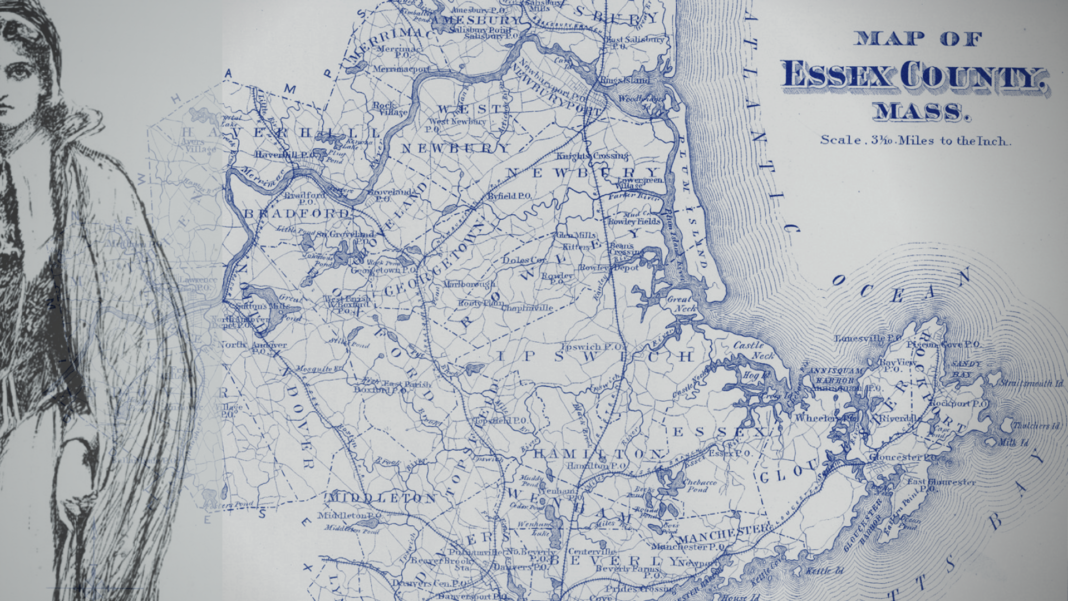
It’s often said that American history advances by fits and starts, taking two steps forward, one step back. Arenas in which the underprivileged or marginalized have had to fight for their freedoms—women’s rights, civil rights, the labor movement—have long been characterized by sacrifice, setback, and struggle, sometimes at great cost.
But when someone is willing to die for their beliefs, how much of a criminal can they be?
Recently on Crime Capsule we met the ‘Witch’ of Delray, a misunderstood woman named Rose Veres long maligned by her community, whose imprisonment for murder ultimately led to a wrongful conviction and the clearing of her name. Veres’ story echoes in many ways the story of Mary Dyer, an Englishwoman who moved to the United States while it was still a British colony. Arriving in the Massachusetts Bay Colony around 1635, Dyer and her husband found local Puritan society to be so restrictive that they soon fled to a fledgling community up the coast where they could practice their beliefs in peace.
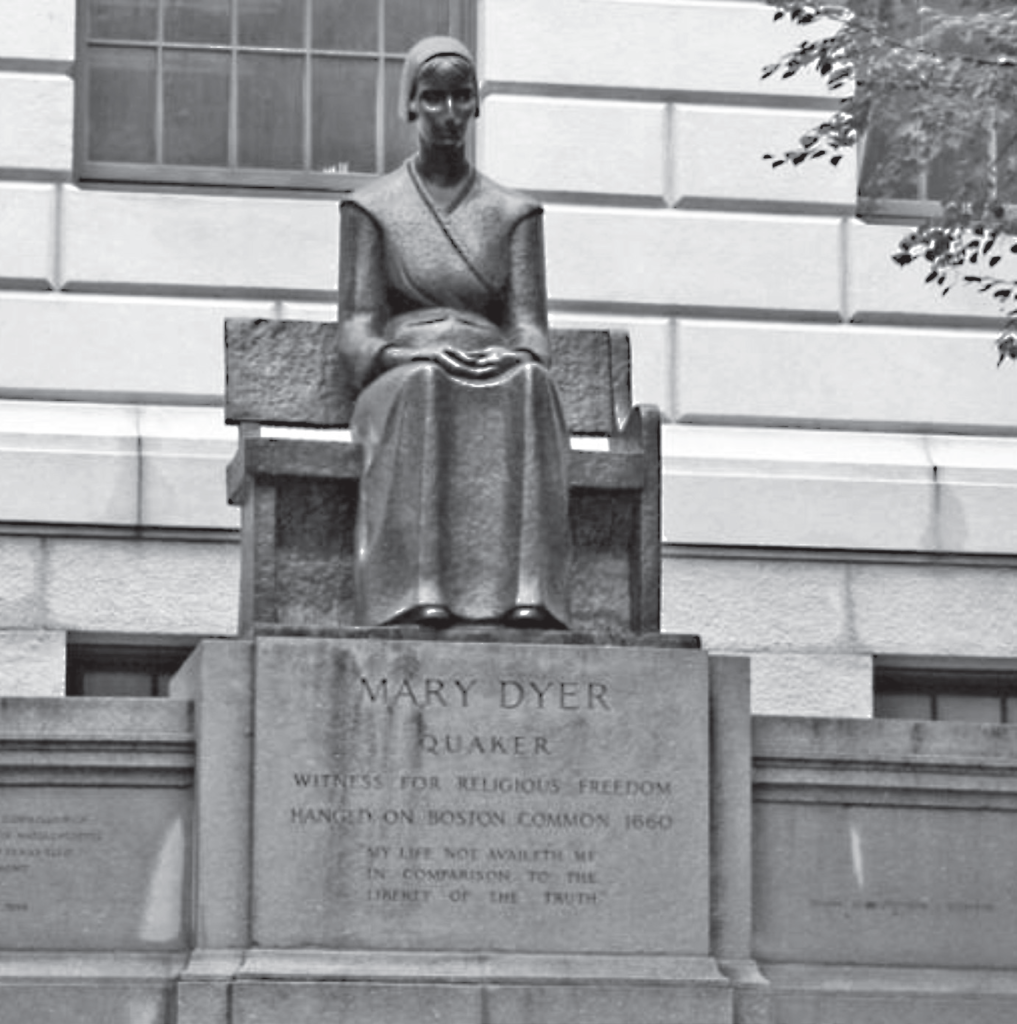
After all, Portsmouth, Rhode Island—originally known as Pocasset—had been founded as an enclave for religious seekers seeking to escape the dominant Puritanism. As historian M.E. Reilly-McGreen describes in her book Witches, Wenches, & Wild Women of Rhode Island, the Dyers were early adherents of Quakerism, founded back home in England by George Fox. Wholly taken with Fox’s message that God could speak to and through anyone, without any need for controlling clergy, Mary took it upon herself to challenge the stifling orthodoxy of the day and preach religious freedom for all.
LEARN MORE: Meet more extraordinary women from Rhode Island
Needless to say, the ruling powers back in Boston were not amused, and on one of her first trips back to Massachusetts in 1657 Dyer was immediately arrested, banished, and threatened with execution should she return. Bolstering the Boston governor’s decision was the convenient news of a stillbirth that Mary had had not long after arriving in Pocasset, a medically deformed fetus that was immediately branded a devil baby. Historian Larry Stanford, in his book Scandalous Newport, Rhode Island, has (bless him) dug up Governor Winthrop’s original description of the child:
“…it had a face, but no head, and the ears stood upon the shoulders and were like an ape’s; it had no forehead but over the eyes were four horns, hard and sharp. Between the shoulders, it had 2 mouths and in each of them a piece of red flesh sticking out; it had arms and legs as other children do but, instead of toes, it had on each foot three claws, like a young fowl, with sharp talons.”
Yeah. Right.
Undeterred, Mary returned time and time again to advance the Quaker cause, including advocating for other imprisoned ministers and protesting the trials of still more. Arrested again and again, expelled again and again, one of her trips to Boston in the late 1650s nearly became her last, when she was led to the gallows herself—only to be saved at the last second by the new governor of the colony calling a stay of execution from the crowd. Her visit in 1660, however, did prove to be her last, and as Reilly-McGreen notes, there would be no eleventh-hour reprieve this time. Hung on Boston Commons, in her last words Dyer refused to recant her beliefs, and died true to her faith.

Why, you may ask, do we see Dyer and Veres as soul sisters? Not simply because both were branded with unjust labels of witchery after enduring unwarranted suspicion and abuse. No, in looking at the struggle for freedoms in this country, we see how wrongful conviction creates an even greater desire for the truth to emerge, and remember these women for the sacrifices they made to bring about a more just world—even paying the greatest cost there is. Indeed, as Stanford writes, Dyer’s death brought about the very change for which she had worked: “When news of [her] execution reached England, King Charles II was outraged and banned all further executions of Quakers in England.”
How’s that for a legacy? Frankly, we here at Crime Capsule like to think that wherever they are now, both Veres and Dyer are having a good long laugh at the fools who tried to silence them—and who ended up making them icons of their movements instead.
Further Reading on Mary Dyer & Puritan History
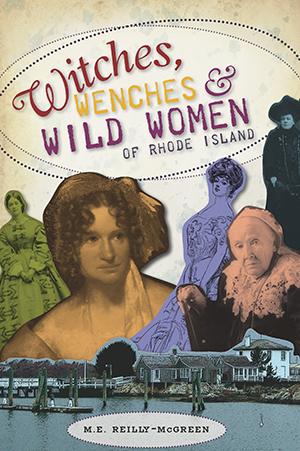
Experience the history of Rhode Island and learn about the Ocean State’s most fascinating and wild women. Read of Mercy Brown, a nineteen-year-old consumption victim who was thought to be a vampire and whose body was exhumed and discovered with blood in the heart. There was Goody Seager, accused of infesting her neighbor’s cheese with maggots by using witchcraft, and Tall “Dutch” Kattern of Block Island, an opium-eating fortuneteller whose curse, legend says, set a ship aflame after its crew cast her ashore. Hear of the revolutionaries, like Julia Ward Howe, who invented Mother’s Day and wrote the words to “The Battle Hymn of the Republic,” and religious reformer Anne Hutchinson, said to be the inspiration for Hawthorne’s heroine in The Scarlet Letter, in these thrilling tales from author M.E. Reilly-McGreen.
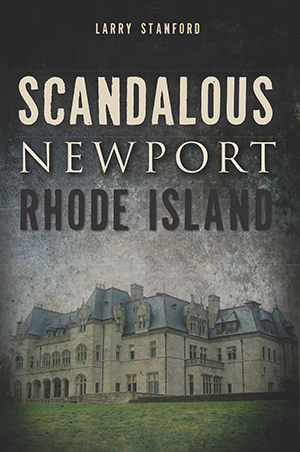
Newport, Rhode Island, is renowned for its stunning cliff-side vistas and the luxurious summer homes of the Gilded Age elite. Yet the opulent facades of the City by the Sea concealed the scintillating scandals, eccentric characters and unsolved mysteries of its wealthiest families. Learn how Cornelius Vanderbilt III was cut out of the family’s fortune for his unapproved marriage to Grace Wilson and how John F. Kennedy’s marriage to a Newport debutante helped to secure his presidency. Travel to the White Horse Tavern, where a vengeful specter still waits for his supposed murderer to return to the scene, and discover the mysterious voyage of the “Sea Bird” and its missing crew. Historian Larry Stanford searches the dark corners of Newport’s past to expose these scandalous tales and more.
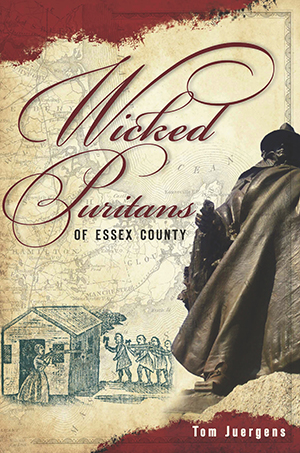
Wicked Puritans of Essex County is a unique report on Puritan criminality that shatters the stereotype of the Puritan (someone striving, above all, to achieve moral purity). With a ground breaking, eye opening level of detail, this book reveals that a surprising number of Puritans were prone to kick the dog, skip church, disrespect the minister, steal a keg of nails, shortweight your grain, turn swine into your corn, burn your barn, or perform any number of wicked and vicious acts. Lesson learned? The Puritan crowd was not, after all, much different from any other, then or now. Author Tom Juergens may not be the first to drive nails into the coffin of Puritan moral superiority, but he has found a hefty hammer to wield in the record they left behind.
Looking for more to read during quarantine? Check out our quaran-reads here. Finding us for the first time, and want to learn more about what we do? Visit our welcome page and sign up for the Crime Capsule email newsletter. See you behind bars!



